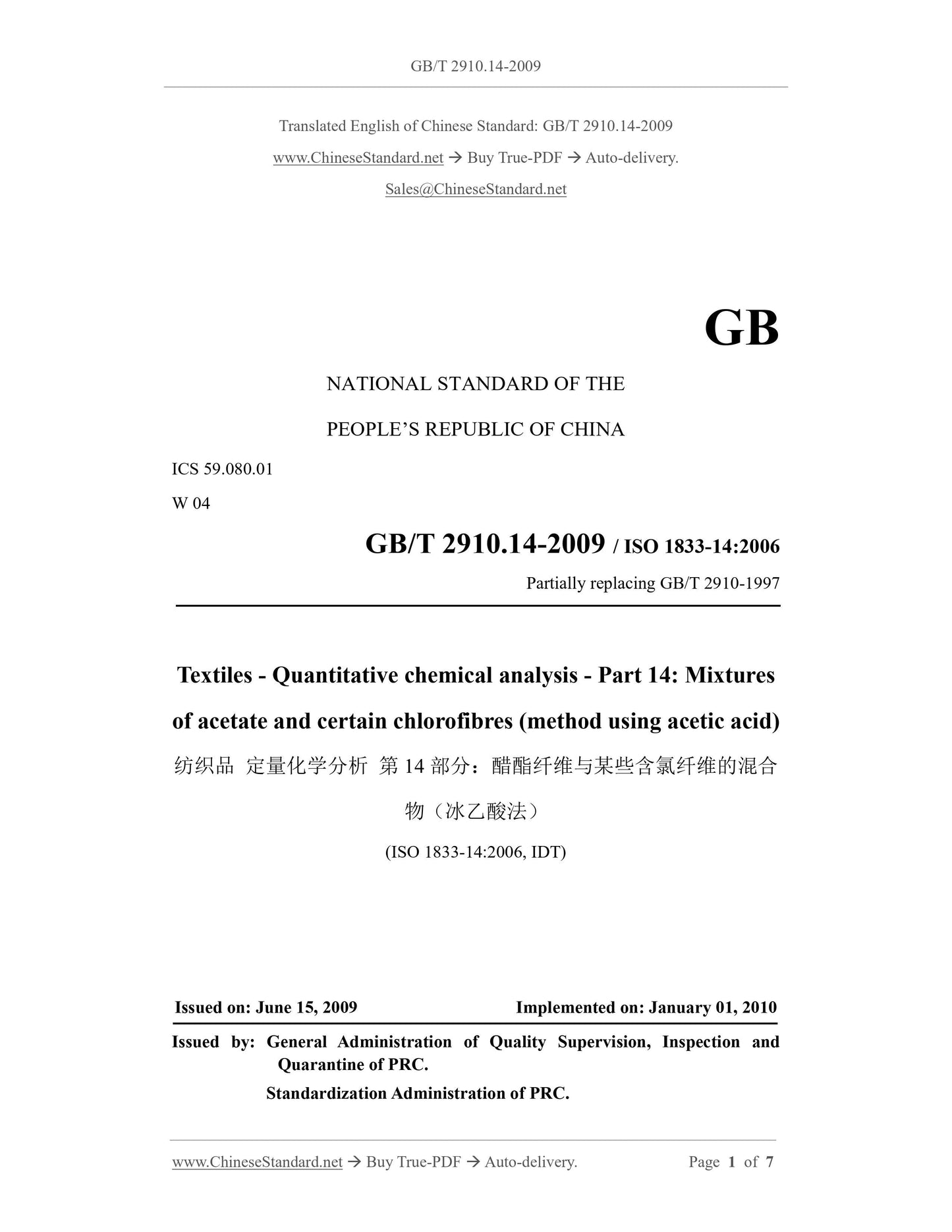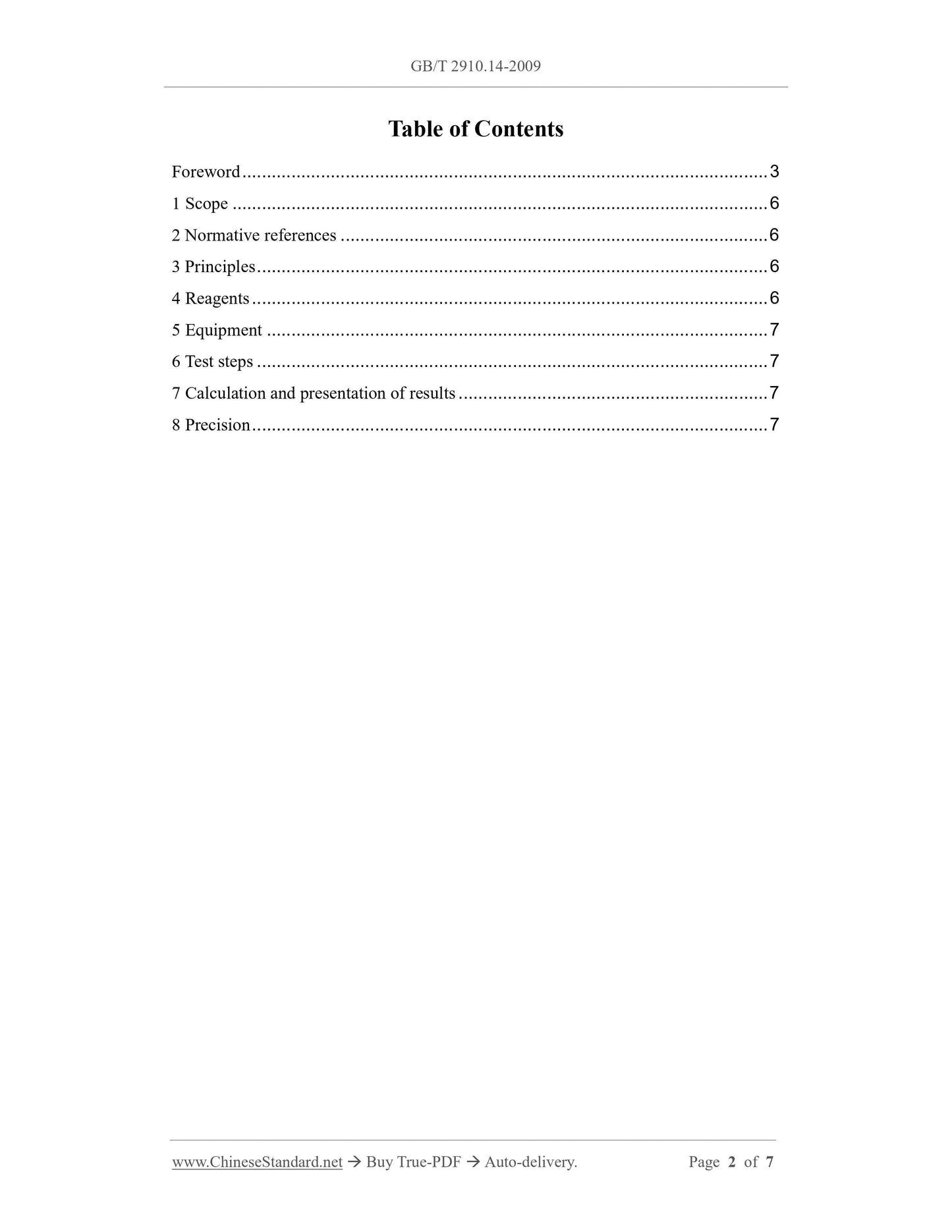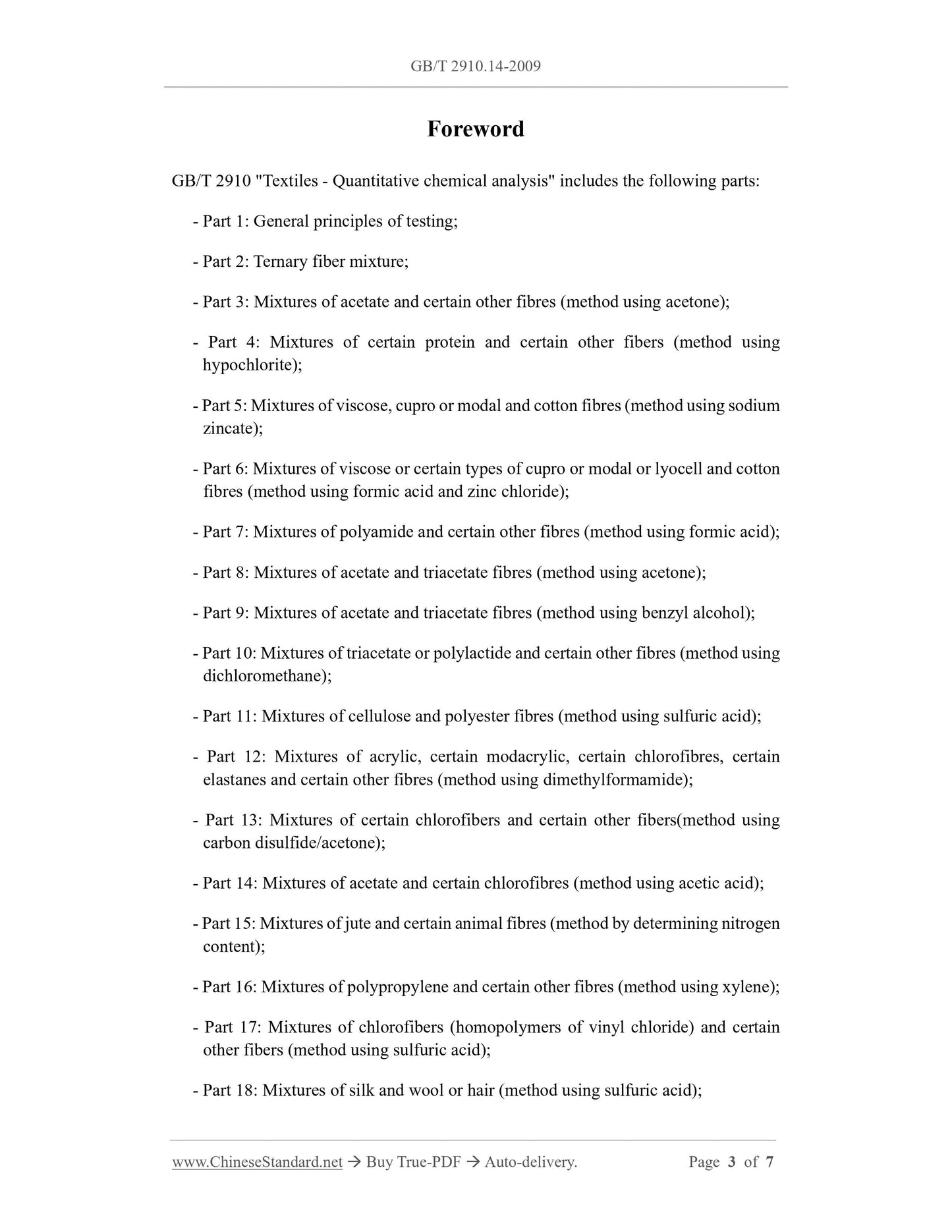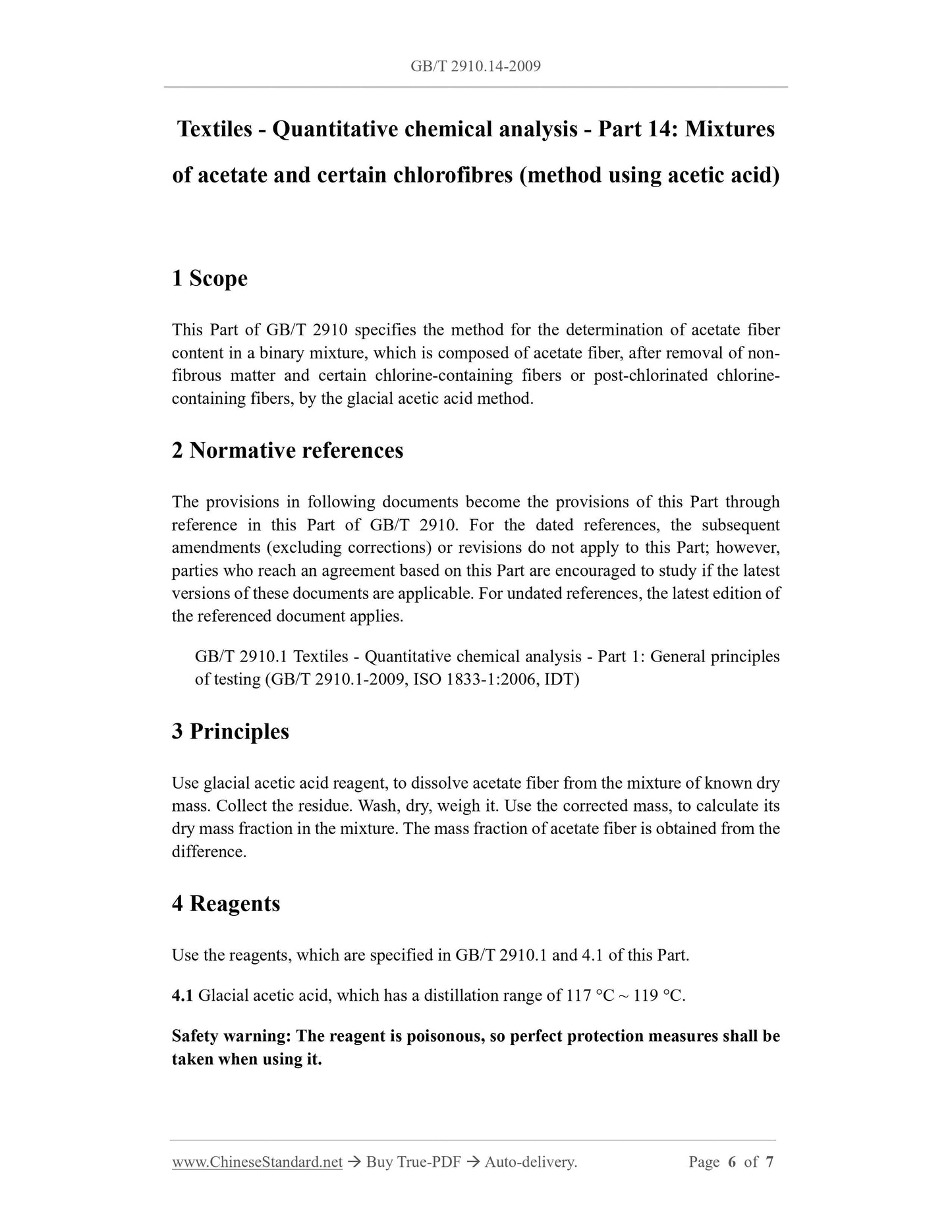1
/
of
4
www.ChineseStandard.us -- Field Test Asia Pte. Ltd.
GB/T 2910.14-2009 English PDF (GB/T2910.14-2009)
GB/T 2910.14-2009 English PDF (GB/T2910.14-2009)
Regular price
$75.00
Regular price
Sale price
$75.00
Unit price
/
per
Shipping calculated at checkout.
Couldn't load pickup availability
GB/T 2910.14-2009: Textiles -- Quantitative chemical analysis -- Part 14: Mixtures of acetate and certain chlorofibre (method using acetic acid)
Delivery: 9 seconds. Download (and Email) true-PDF + Invoice.Get Quotation: Click GB/T 2910.14-2009 (Self-service in 1-minute)
Newer / historical versions: GB/T 2910.14-2009
Preview True-PDF
Scope
This Part of GB/T 2910 specifies the method for the determination of acetate fibercontent in a binary mixture, which is composed of acetate fiber, after removal of non-
fibrous matter and certain chlorine-containing fibers or post-chlorinated chlorine-
containing fibers, by the glacial acetic acid method.
Basic Data
| Standard ID | GB/T 2910.14-2009 (GB/T2910.14-2009) |
| Description (Translated English) | Textiles -- Quantitative chemical analysis -- Part 14: Mixtures of acetate and certain chlorofibre (method using acetic acid) |
| Sector / Industry | National Standard (Recommended) |
| Classification of Chinese Standard | W04 |
| Classification of International Standard | 59.080.01 |
| Word Count Estimation | 6,619 |
| Date of Issue | 2009-06-15 |
| Date of Implementation | 2010-01-01 |
| Older Standard (superseded by this standard) | GB/T 2910-1997 |
| Quoted Standard | GB/T 2910.1 |
| Adopted Standard | ISO 1833-14-2006, IDT |
| Regulation (derived from) | National Standard Approval Announcement 2009 No.8 (Total No.148) |
| Issuing agency(ies) | General Administration of Quality Supervision, Inspection and Quarantine of the People's Republic of China, Standardization Administration of the People's Republic of China |
| Summary | This standard specifies the go unless two -component mixture of fiber material after some chlorine acetate fibers and fiber or fibers after chlorine chloride acetate fiber content in ways determined by glacial acetic acid method. |
Share







